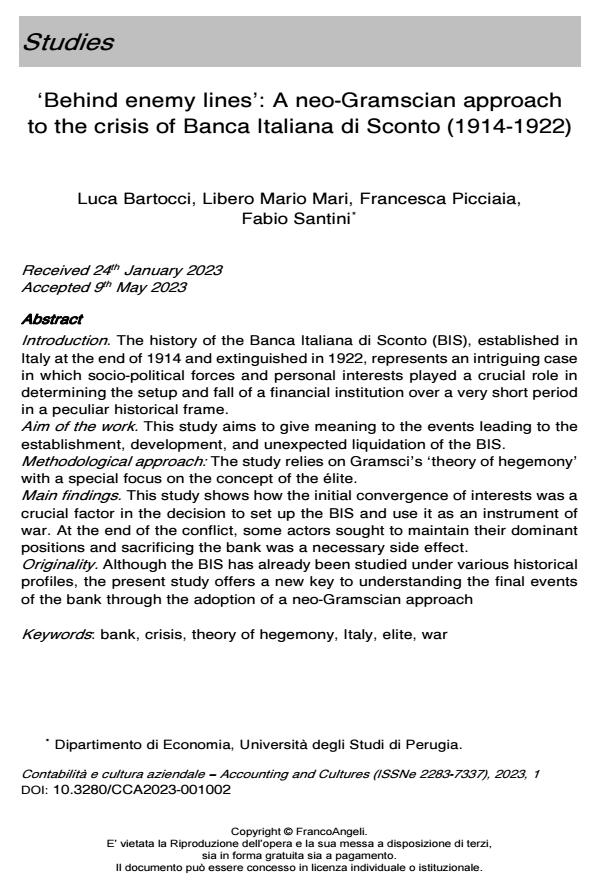"Behind enemy lines": A neo-Gramscian approach to the crisis of Banca Italiana di Sconto (1914-1922)
Journal title CONTABILITÀ E CULTURA AZIENDALE
Author/s Luca Bartocci, Libero Mario Mari, Francesca Picciaia, Fabio Santini
Publishing Year 2023 Issue 2023/1
Language English Pages 30 P. 9-38 File size 142 KB
DOI 10.3280/CCA2023-001002
DOI is like a bar code for intellectual property: to have more infomation
click here
Below, you can see the article first page
If you want to buy this article in PDF format, you can do it, following the instructions to buy download credits

FrancoAngeli is member of Publishers International Linking Association, Inc (PILA), a not-for-profit association which run the CrossRef service enabling links to and from online scholarly content.
Introduction. The history of the Banca Italiana di Sconto (BIS), established in Italy at the end of 1914 and extinguished in 1922, represents an intriguing case in which socio-political forces and personal interests played a crucial role in determining the setup and fall of a financial institution over a very short period in a peculiar historical frame. Aim of the work. This study aims to give meaning to the events leading to the establishment, development, and unexpected liquidation of the BIS. Methodological approach: The study relies on Gramsci’s ‘theory of hegemony’ with a special focus on the concept of the élite. Main findings. This study shows how the initial convergence of interests was a crucial factor in the decision to set up the BIS and use it as an instrument of war. At the end of the conflict, some actors sought to maintain their dominant positions and sacrificing the bank was a necessary side effect. Originality. Although the BIS has already been studied under various historical profiles, the present study offers a new key to understanding the final events of the bank through the adoption of a neo-Gramscian approach
Keywords: bank, crisis, theory of hegemony, Italy, elite, war
Luca Bartocci, Libero Mario Mari, Francesca Picciaia, Fabio Santini, "Behind enemy lines": A neo-Gramscian approach to the crisis of Banca Italiana di Sconto (1914-1922) in "CONTABILITÀ E CULTURA AZIENDALE" 1/2023, pp 9-38, DOI: 10.3280/CCA2023-001002